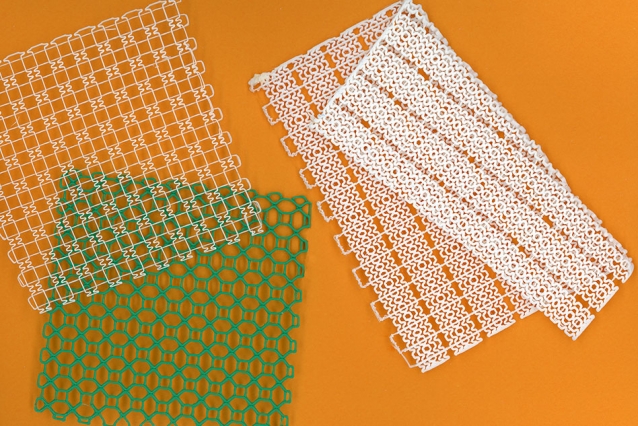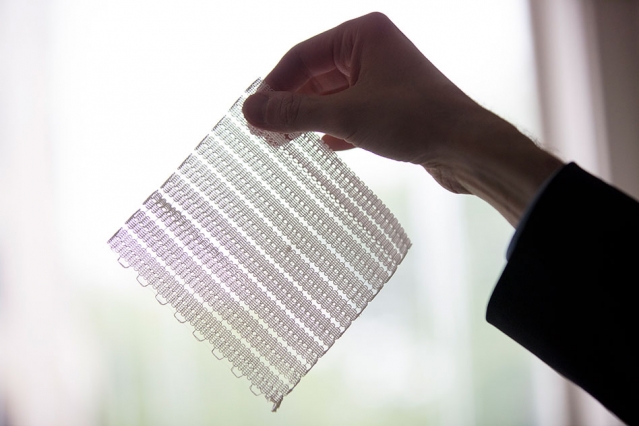Engineers from the Massachusetts Institute of Technology (MIT) have developed new, flexible, 3D printable mesh materials that support softer tissues such as muscles and tendons. Such materials could be used to create medical devices, wearable supports, and implantable devices.
“This work is new in that it focuses on the mechanical properties and geometries required to support soft tissues,” said Sebastian Pattinson, a postdoctoral fellow at MIT who led the study published in Advanced Functional Materials.
“3D printed clothing and devices tend to be very bulky. We were trying to think of how we can make 3D printed constructs more flexible and comfortable, like textiles and fabrics.”

Emulating soft tissue with 3D printing
Inspired by collagen, Pattinson and his team of researchers sought to create a stretchy, tough, and pliable fabric that works with the human body as personalized, wearable supports. Collagen’s structure can be curvy, intertwined or emulate loosely braided ribbons. Using thermoplastic polyurethane (TPU), 3D printed mesh structures were produced.
It was found that the taller they designed the waves of the mesh, the more it was able to stretch at low strain before becoming stiffer. The team recognized this as a design principle that can help to tailor a mesh’s degree of flexibility to mimic soft tissue. John Hart, associate professor of mechanical engineering, MIT, stated:
“The beauty of this technique lies in its simplicity and versatility. Mesh can be made on a basic desktop 3D printer, and the mechanics can be tailored to precisely match those of soft tissue.”
Interfacing with the human body
A long strip of 3D printed mesh was tested to support the ankles of several healthy volunteers. This was customized for each volunteer in an orientation expected to support the ankle if it turned inward. Then, each ankle was placed into an ankle stiffness measurement robot which moved it in 12 different directions, measuring the force the exerted.
Depending on the ankle’s stiffness, the changes in the mesh’s behavior was observed. The team deduced that the mesh increased the ankle’s stiffness during inversion while leaving it relatively unaffected as it moved in other directions. As a result, stronger and stiffer fibers and threads were integrated into a pliable mesh with stainless steel fibers 3D printed over regions of an elastic mesh.
“One of the reasons textiles are so flexible is that the fibers are able to move relative to each other easily. We also wanted to mimic that capability in the 3D printed parts,” added Pattinson. This combination is predicted to prevent muscles from overstraining in ankle, knee, and hernia meshes.
“There’s potential to make all sorts of devices that interface with the human body. Surgical meshes, orthoses, even cardiovascular devices like stents — you can imagine all potentially benefitting from the kinds of structures we show.”
“Additive Manufacturing of Biomechanically Tailored Meshes for Compliant Wearable and Implantable Devices” is co-authored by Sebastian Pattinson, Meghan Huber, Sanha Kim, Jongwoo Lee, Sarah Grunsfeld, Ricardo Roberts, Gregory Dreifus, Christoph Meier, Lei Liu, Neville Hogan, and A. John Hart.

For more additive manufacturing news subscribe to the 3D Printing Industry newsletter and follow us on Twitter and Facebook.
Searching for a career in additive manufacturing? Visit 3D Printing Jobs for a selection of roles in the industry.
Featured image shows a 3D printed stretchy mesh, with customized patterns designed to be flexible yet strong, for use in ankle and knee braces. Photo via M. Scott Brauer/MIT.


